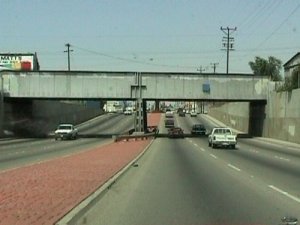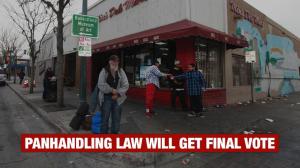I did a little online exploring this week to find out how Bakersfield is portrayed by the media, to “outsiders,” and among its residents. While the official coverage – by the newspaper and the Visitors Bureau – is universally positive (save for the occasional blurbs about minor scandals or assaults in the “less desirable” parts of town), there are self-deprecating blog posts written by current and former residents, as well as a scathing entry in the infamous UrbanDictionary.com. What became apparent in my search was that, despite the many jabs against the city – for its air quality, its lack of good shopping, its redneck citizenry – an entire subsection of Bakersfield’s cultural dynamic is ignored. Namely, its areas of poverty and racial segregation.
The Bakersfield Visitors Bureau paints an exciting portrait of the city as a travel destination. Here’s the video posted on their website:
Note that the restaurant portrayed in the video is considered the “fanciest” one in town, and the rest of the buildings shown are either in wealthy neighborhoods or are cropped to eliminate any traces of surrounding poverty (as in the case of the convention center downtown). Furthermore, residents are discouraged from swimming in the featured river, as people drown in its treacherous currents every summer. Though boasting that there’s always something “more to explore,” the website fails to document the major areas of the city in which poverty and crime have had the biggest impact and instead turns Bakersfield into a destination for the consumption of tourist adventure.
On Urban Dictionary, Bakersfield is described as a “pretty horrible place,” due to the air quality, meth, singular shopping mall, and the “Mexicans that hop the border and invade town [sic] then clog the streets protesting their ‘deserved rights’ when they are not even citizens.” Wow. The “definition” then goes on to describe how the city can be understood/divided according to high school:
South High (southside), East High (eastside) {don’t walk the streets at night because you WILL get stabbed by a mexican gang}, North High (north) {A.K.A. Oildale- which isn’t a city in itself, just a name for the trailer park/white trash part of town], West High (west) {if you want to get shot, eat at a taco bell}, Ridgeview High {out in the middle of fucking nowhere}. Then there are the snobby, rich schools around the Northwest/Southwest part of the city such as Centennial High, Liberty High, and Stockdale High. Liberty is home to the hottest, most shallow kids in the whole city.
While this account does address the racial issues that stratify the city, the blame is misplaced. This anger (racism/class hatred directed at the migrant workers/poor/homeless that comprise much of Bakersfield’s population) is a constant refrain. The man who drove the tow truck when I had a flat tire told me he refuses to give money to the homeless because he believes they refuse to work hard. The woman in line next to me at the salon told me she thinks Donald Sterling should be left alone, since his racist comments were “made in the privacy of his own home.” A woman business owner recently informed me that she believes people “are just lazy” and shouldn’t be given any “extra breaks.”
Then there’s this:
From complete obfuscation to blame, the attempts to remove the “undesirable” population – or at least make it invisible – are similar to colonial narratives that aim to both entice tourists and blame problems on the “native” populations (e.g. India during the British Empire).


